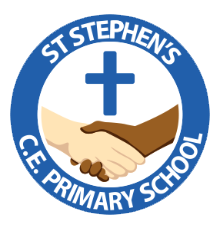Computing
At St Stephen’s, we believe every child should have the freedom to develop their skills and receive encouragement to succeed in computing. We ensure that all learners, regardless of their current ability, are challenged with opportunities that build fluency, reasoning, and problem-solving skills. Through this approach, children are provided with a wide range of engaging tasks that encourage them to apply their skills in real-life contexts. This aligns with the Mastery Model of teaching, which St Stephen’s has been embedding across the school. This approach promotes inclusivity while using clear models, structures, and representations to teach key computing concepts, supported by hands-on tools where appropriate. Knowledge is taught and modeled by expert teachers, who then guide children through a purposeful journey to apply their new knowledge and face challenges that deepen their understanding.
A whole-school curriculum with high expectations and excellence, delivered rigorously through well-sequenced subjects, progression in generative knowledge, rich vocabulary, concepts, and skills:
The Computing curriculum at St Stephen’s is carefully designed, building on the national framework and adapting to the needs of our learners, ensuring rigor through small steps of learning.
The 5-part lesson structure in Computing is research-informed, offering children the best opportunity to retain key knowledge and skills that lay the foundation for future learning.
Displays, content, and models are used to emphasize key computing vocabulary and language, supporting children in becoming more proficient in their communication and understanding.
Teachers make use of Key Performance Indicators from all year groups, ensuring they target essential objectives, pitch their teaching appropriately, and challenge learners at all levels.
S-timulating enquiring minds by providing rich and relevant experiences, purposeful and connected learning, and creative thinking:
Enrichment sessions in Computing encourage children to apply their skills in new ways and connect their learning to previous knowledge.
The Computing curriculum follows a Mastery approach, where learners make connections between what they’ve already learned and new concepts being introduced.
Practice in Computing is purposeful and productive, with the 5-part lesson structure designed to provide meaningful learning opportunities and foster independence.
Interleaving techniques are used to challenge students to apply different computing concepts in combination, such as using coding to solve problems from other areas of the curriculum.
Teaching staff explore wider opportunities for children to experience Computing beyond the classroom, inspiring curiosity and engagement with the subject.
P-lacing nurturing, lifelong learning behaviours – resilience, risk-taking, independence, perseverance, and pride in success – at the heart of our curriculum:
Computing lessons use real-life contexts and creative hooks to engage children and highlight the importance of computing in their future lives.
Mistakes and misconceptions are seen as opportunities to learn. Children are encouraged to analyze errors, correct them, and understand why the misconception occurred using the appropriate technical language.
High standards of presentation are expected in all Computing work, and children receive feedback on how to take pride in their learning, both in their coding work and their written reflections.

